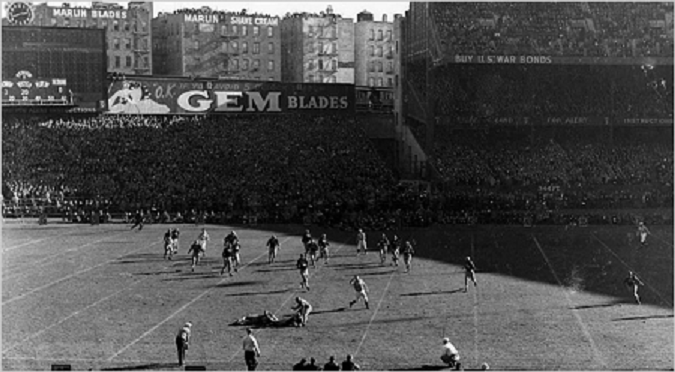


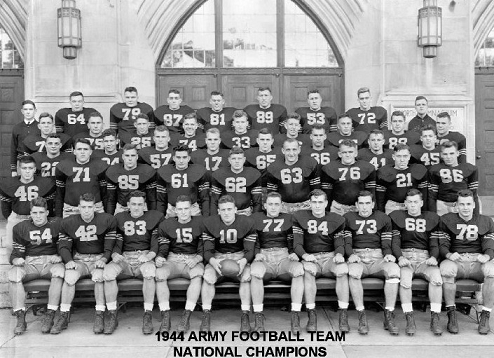
| North Carolina (1-7-1) | 46-0 | |
| Brown (3-4-1) | 59-7 | |
| Pittsburgh (4-5) | 69-7 | |
| Coast Guard (6-3) | 76-0 | |
| (NYC) Duke (6-4) | 27-7 | #10 |
| Villanova (4-4) | 83-0 | |
| (Bronx) Notre Dame (8-2) | 59-0 | #5 |
| at Penn (5-3) | 25-6 | #8 |
| (Baltimore) Navy (6-3) | 23-7 | #4 |
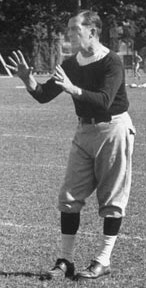 Army
was one of the elite football programs of the first half of the 20th
century. Charles Daly had coached the team to 2 national championships, in 1914 and 1916,
and he was 58-13-3 at Army through 1922. 1923-1935, Army kept it going
under a series of coaches that went a combined 82-19-7, and Army would
have been ranked in an AP poll's final top 25 for every one of those 13
seasons. Army fell back a step or two in the late '30s, to a low
point of 1-7-1 in 1940, but then they hired Hall of Fame coach Red
Blaik (pictured at left) away from Dartmouth, and he reacquainted West Point with winning
seasons and national championships.
Army
was one of the elite football programs of the first half of the 20th
century. Charles Daly had coached the team to 2 national championships, in 1914 and 1916,
and he was 58-13-3 at Army through 1922. 1923-1935, Army kept it going
under a series of coaches that went a combined 82-19-7, and Army would
have been ranked in an AP poll's final top 25 for every one of those 13
seasons. Army fell back a step or two in the late '30s, to a low
point of 1-7-1 in 1940, but then they hired Hall of Fame coach Red
Blaik (pictured at left) away from Dartmouth, and he reacquainted West Point with winning
seasons and national championships.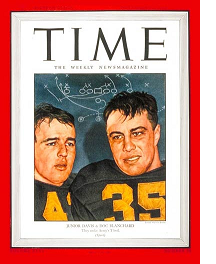
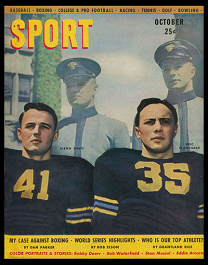
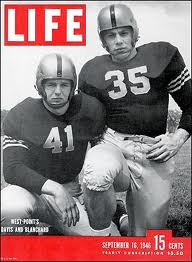
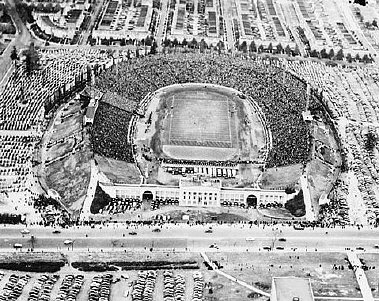
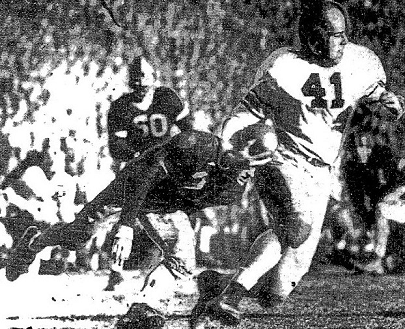
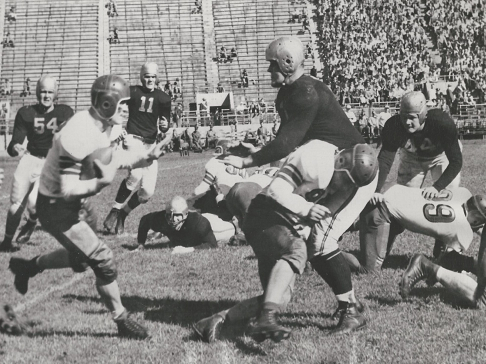
| Missouri (3-5-2) | 54-0 | |
| Iowa (1-7) | 34-0 | |
| at Wisconsin (3-6) | 20-7 | |
| Great Lakes Navy (9-2-1) | 26-6 | (#17) |
| Minnesota (5-3-1) | 34-14 | #16 |
| Indiana (7-3) | 21-7 | #14 |
| Pittsburgh (4-5) | 54-19 | |
| Illinois (5-4-1) | 26-12 | #13 |
| Michigan (8-2) | 18-14 | #3 |
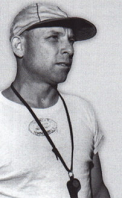 Ohio State had won its first MNC just 2 years prior, in 1942.
Almost all of the notable players on this team played on that one too.
Paul Brown, coach of the 1942 team, departed after 1943, and his
assistant, Carroll Widdoes (pictured at left), took over this season.
Widdoes only stuck around 2 seasons himself, going 9-0 this year and
7-2 in 1945.
Ohio State had won its first MNC just 2 years prior, in 1942.
Almost all of the notable players on this team played on that one too.
Paul Brown, coach of the 1942 team, departed after 1943, and his
assistant, Carroll Widdoes (pictured at left), took over this season.
Widdoes only stuck around 2 seasons himself, going 9-0 this year and
7-2 in 1945.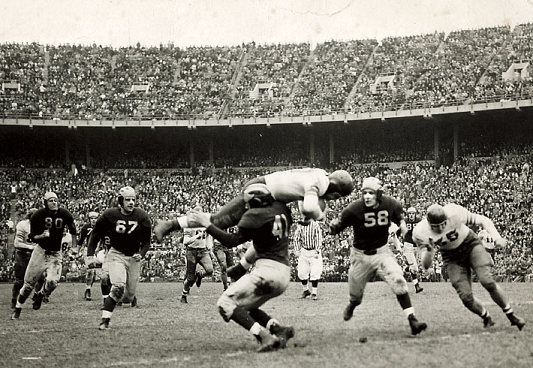
| Army 9-0 | Ohio State 9-0 | |||||||||||||||||||||||||||||
|---|---|---|---|---|---|---|---|---|---|---|---|---|---|---|---|---|---|---|---|---|---|---|---|---|---|---|---|---|---|---|
|
|
|||||||||||||||||||||||||||||
| 1) Boand
(math system) College Football Researchers Association |
5.0 |
| 3) AP Poll Poling (math) Billingsley (math) |
4.91 |
| 6) DeVold (math) | 4.87 |
| 7) National Championship Foundation | 4.76 |
| 8) Litkenhous (math) | 4.5 |
| 9) Houlgate (math) | 4.4 |
| 10) Dunkel (math) | 4.02 |
| 11) Sagarin (math) | 3.97 |
| 12) Helms Foundation | 3.93 |
| 13) Berryman (math) | 3.84 |
| 14) Sagarin-ELO (math) | 3.81 |
| 15) Williamson (math) | 3.2 |
| 16) Dickinson (math) | 3.0 |
| 1) Boand (math system) | 4.26 |
| 2) College Football Researchers Association | 4.22 |
| 3) Poling (math) | 4.11 |
| 4) Helms | 4.09 |
| 5) Sagarin-ELO (math) | 4.06 |
| 6) National Championship Foundation | 3.96 |
| 7) Dickinson (math) | 3.49 |
| 8) Houlgate (math) | 3.35 |
| 9) Billingsley (math) | 3.34 |
| 10) Sagarin (math) | 3.28 |
| 11) Parke Davis | 2.77 |
| 1) Houlgate (math system) | 4.5 |
| 2) Helms | 4.3 |
| 3) Parke Davis | 4.2 |
| 4) National Championship Foundation | 3.7 |
| 5) Billingsley (math) | 3.6 |